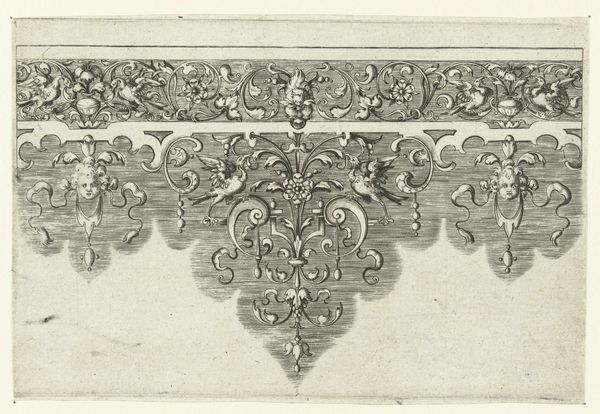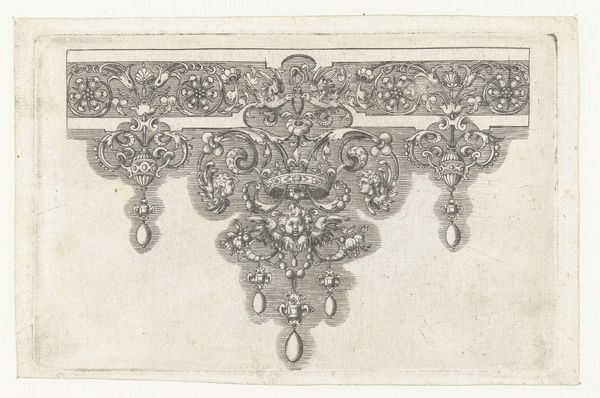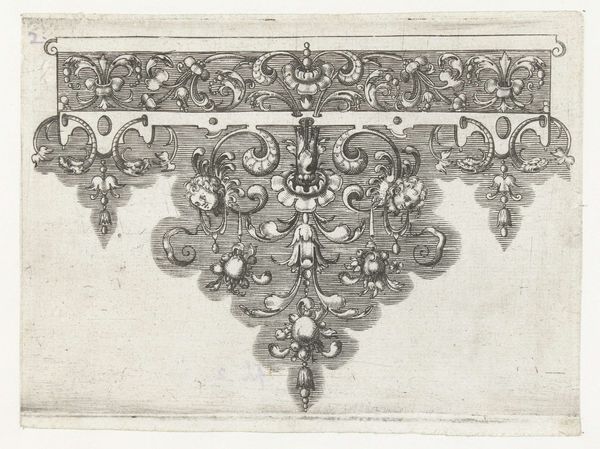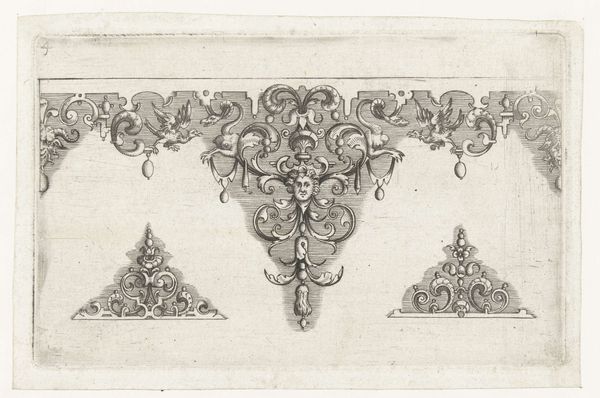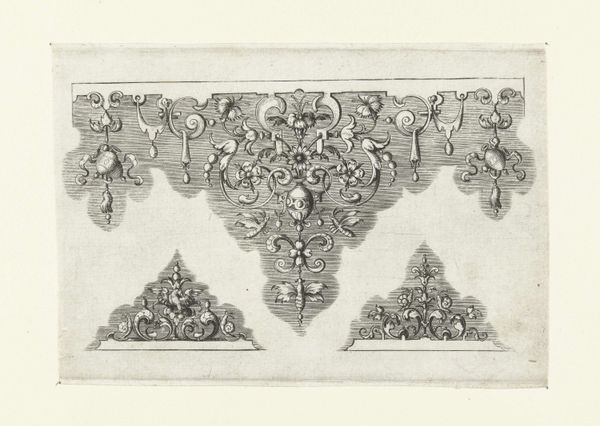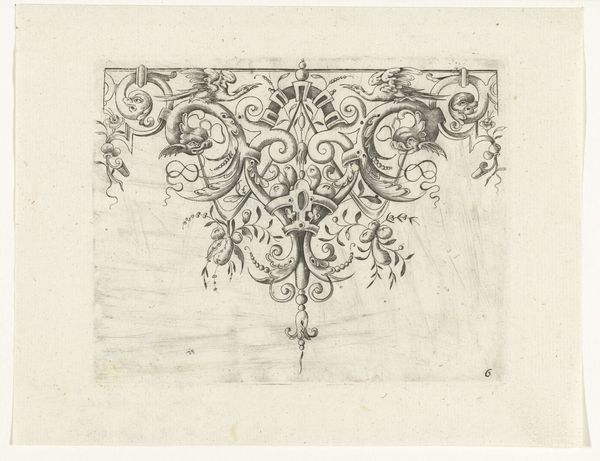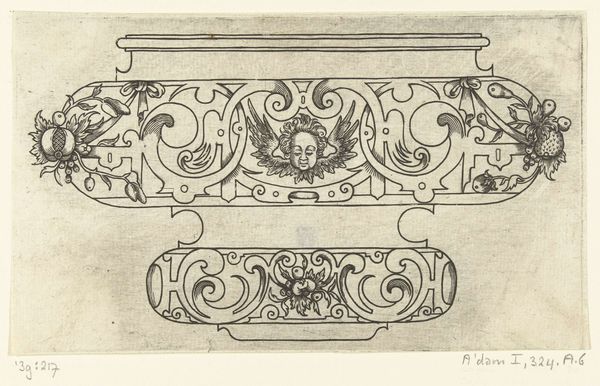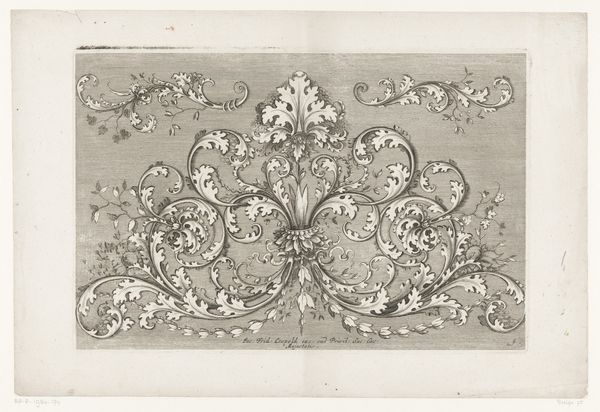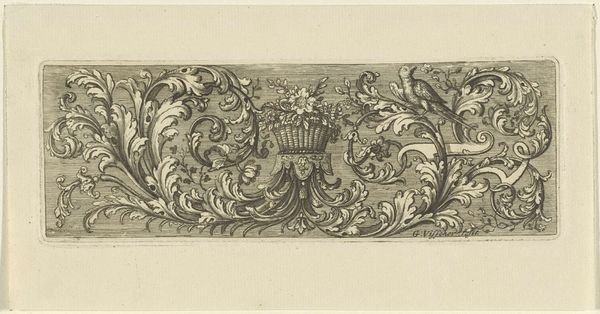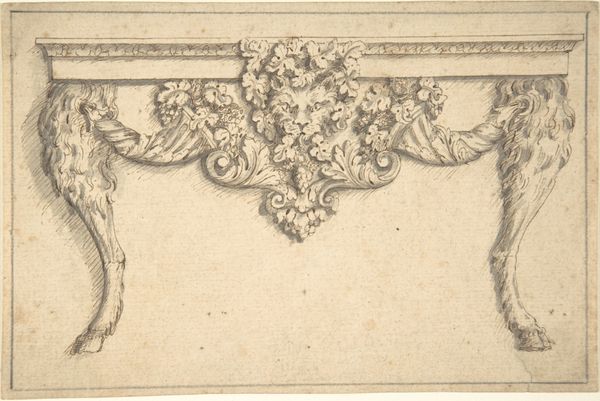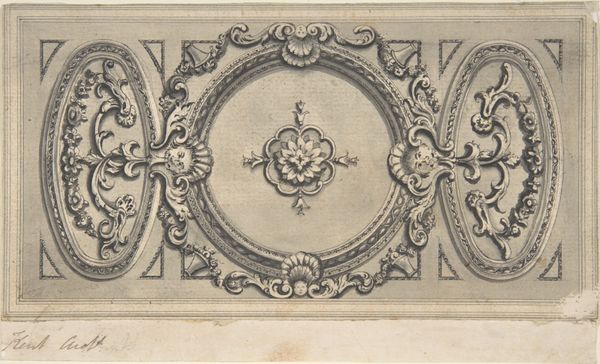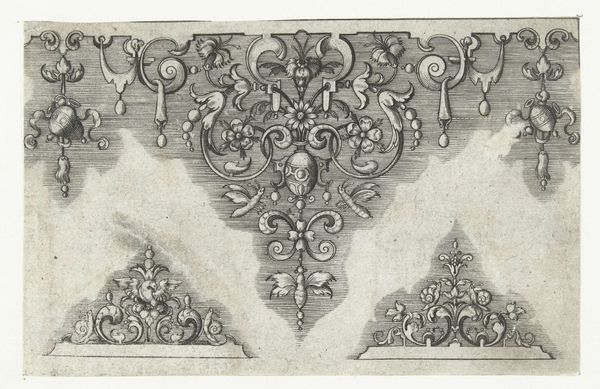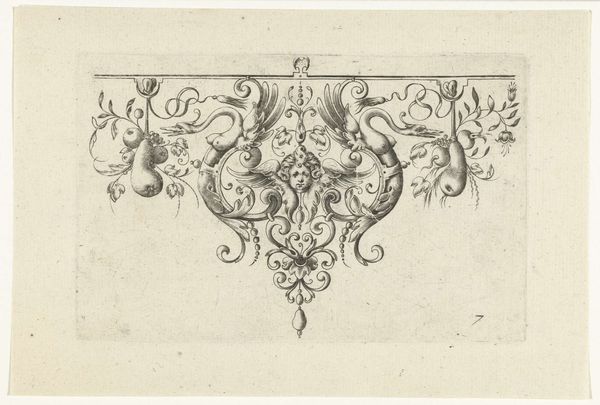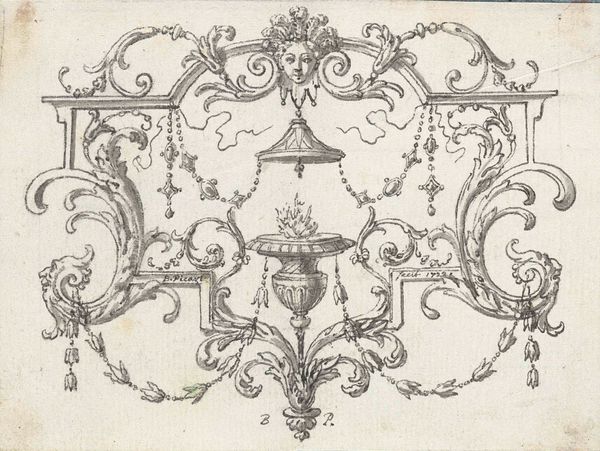
drawing, engraving
#
drawing
#
baroque
#
pen drawing
#
old engraving style
#
engraving
Dimensions: height 94 mm, width 148 mm
Copyright: Rijks Museum: Open Domain
Editor: Here we have an engraving from sometime between 1571 and 1639, titled "Edge with a Frieze Decorated at the Top with Flowers and Foliage," created by an anonymous artist. I’m struck by the density of the pattern; it feels almost overwhelming. What stands out to you? Curator: It’s crucial to consider the materiality and the reproductive technologies at play. This isn't just a drawing, it's an engraving. What was its function, its utility within the early modern social context? Editor: It looks like a decorative border, perhaps intended for printing or some kind of applied art? Curator: Exactly. These engravings were functional objects, templates, essentially. Consider the labor involved: the engraver, the printer, the end user who might apply these designs to furniture or textiles. Think about how this form flattens hierarchies. Editor: What do you mean by hierarchies? Curator: The engraving blurs the boundaries between fine art and craft. Was this engraver considered an artist, or an artisan? The material itself forces us to question how labor is valued, how consumption patterns were taking hold with increasing printed materials, how art could become applied to everyday objects. Does understanding its original intention change the way we view it? Editor: I think so. Thinking about the labor, and its social function really challenges my initial assumptions about its aesthetic value, as something 'precious'. It's amazing to consider it as a template, democratizing art in a way. Curator: Precisely. It shows that artistic expression can be embedded within even the most functional objects. We tend to focus on the 'who' but sometimes fail to focus on the 'how' and 'why.'
Comments
No comments
Be the first to comment and join the conversation on the ultimate creative platform.
